We’ve just finished a series on how to clear Handgun Malfunctions. During the malfunction, it doesn’t matter why, only that you can clear the malfunction. If you are defending yourself in the real world, why the gun malfunctioned doesn’t matter a bit, just that you clear the gun and get back in the fight.
During training, if your gun malfunctions, you should ask why. Was it something you did? Is the gun broken? Is something else wrong? Or is it user error? In the end, it’s probably your fault!
Why is it your fault? And what did or didn’t you do that would have fixed it? Here are the most common problems encountered that create malfunctions in your handgun.
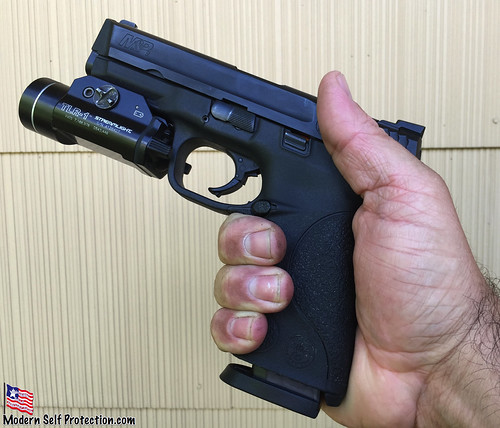
Magazine Not Seated All the Way or Correctly
Most shooters are timid when it comes to working with their gun. The only thing you should do nicely to your gun is press the trigger. Everything else should be done with force and vigor. Putting a magazine in your handgun is no different. It should be one fluid motion and be done with authority.
I’ve seen most students want to start the magazine in the well and then hit it a couple times to make sure it gets in there all the way. No problems at the square range but when you are actually running the gun hard (i.e. training for self defense), you should get the magazine started and with on motion slam it into the butt of the gun with an open palm.
Make sure your fingers and shooting hand are far enough up to not interfere with the loading. On most guns, this isn’t a problem, but as we use smaller guns, sometimes you can get your hand in the way. You’ll only do it once. When I forget to get my hand out of the way, it normally gives me a huge blood blister and hurts like the devil.
Not Running the Slide Correctly
This goes with shooters working the gun timidly. Run the slide correctly. Pull back hard and fast on the slide to chamber a round. Pull it all the way back until the slide stops by hitting the frame of the gun. Then simply let go.
The gun is designed to run fast all the way back and then come forward on its own spring tension. When you don’t let the slide go forward like it’s designed, you play with how the gun goes back into battery and how everything inside sets. The gun may fire the first round and then have problems with the second. Or the gun may not go into battery (which means some of the brass is showing and creates an unsafe firing condition). Today’s modern guns are designed to not let the gun fire when it’s out of battery for safety reasons.
The other problem is not pulling the slide back all the way. When you short stroke the slide, you mess with the spring design of the gun and magazine. The round doesn’t really come out of the magazine like it’s suppose to and the second round in the mag doesn’t move up to the pole position like it should. Then on the second shot, the round isn’t sitting correctly in the magazine and it takes a nose dive causing all sorts of nasty looking malfunctions. Or the round goes nose up coming out of the magazine and doesn’t go into the chamber like it’s supposed to.
Filling Magazines Incorrectly
Filling magazines refers to putting the rounds into the mag. The rounds are designed to sit all the way to the rear of the magazine. If you don’t put them all the way back the nose of the round can rub the front of the magazine as it goes in and create drag which will eventually make the magazine spring or follower bind creating problems when the rounds come out of the mag.
The magazine has to work really hard to do its job as it is. Think of how fast the slide cycles under recoil. During the small time period when the slide is all the way back, that poor magazine spring has to push all the rounds up in the magazine enough to get that top round to pop up so it will get pushed into the chamber by the slide as it goes back into battery. That mag has to work fast. If you put the rounds forward in the magazine and make any more work for that mag spring, it may not work fast enough and create a nasty malfunction.
The secret to this one is really simple. Make sure you load the rounds all the way in when you fill your magazine. You can also cheat (I do) by slapping the back of the filled magazine (not hard) against the palm of your hand to get all the rounds to fall to the back of the magazine like they are supposed to be. Then put the magazine in your pouch or in your gun.
You only have to do it once when the magazine is going into a pouch. Once the rounds are back, the spring will hold them there. You don’t have to pull the magazine out of the pouch and then slap it to make sure it works. Just slap it once or twice right after you fill it and you’ll be fine.
Limp Wrist
This is a very common problem with new shooters and small guns (especially 9mm seem to have this problem). Also, shooters with older 1911’s with different shooting grips seem to have this problem.
The problem is that when the gun recoils it needs something solid to push against to hold the frame in place while the slide moves back, compressing the recoil spring, and then letting it go forward again. If the frame isn’t held still, the slide has no way to push against the spring to compress it. If the spring doesn’t compress, then it can’t expand to push the slide back into battery and load the next round.
The secret to stop limp wristing with new shooters using a two-handed grip is the left hand in the grip. It’s called limp wristing because the shooter is allowing the wrists to bend under recoil. The easiest fix is a parallel thumbs forward grip. By simply pushing the off hand thumb forward, it rotates the left wrist, locking it in place and not letting the gun bend the wrist during recoil.
If you are shooting a little gun one-handed, you have to get a really firm grip on the gun and lock out the wrist. You may want to go as far as Massad Ayoob’s Crush Grip technique. He holds the gun so firm that the front sight is almost shaking. To get this, simply hold the gun in a shooting grip. Look at the front sight. Now keep tightening your grip until the front sight starts to shake. Back off your grip pressure slightly until the front sight isn’t shaking from muscle rigidity. There’s your one-handed shooting grip on a small auto.
Impeding the Slide
Letting something get in the way of the slide and slowing down its speed will cause a malfunction. Normally, this is hard to do, but some grips on some guns can create a problem. If you normally shoot a 1911 with high thumbs (or the shooting thumb resting on the safety and the other thumb on top) and you switch to a Berretta M9 that has a slide mounted safety, now your thumbs may be resting on the safety. With the safety there hitting your thumbs as the slide recoils, it could be just enough to mess with the gun but not even enough for you to feel.
This is hard to actually create. I rest my thumbs on the slide of my Glock and my M&P 9mm and have no problems. I don’t feel the slide rubbing against my thumbs and the slide doesn’t care. It takes some force and thought to create a malfunction this way. Just be careful if you are shooting a gun with a slide-mounted safety as that could be enough drag to create a problem.
Where this really becomes a problem is when you get other body parts or clothing in the way. When we shoot from different positions and bring the gun close to ourselves. Like if you go to a compress ready position by bending your elbows and bringing the firearm to your chest. It would be awkward but possible to bring the gun far enough back, so when the gun cycles the slide it hits you in the chest. You’ll feel it and it will hurt a little. If you feel it against your chest or gut, you will most likely create a malfunction.
This may also happen when the gun is close to you and your slide can get caught up in your clothing. That’s why a lot of instructors teach to cant the gun out when shooting from a compressed, hip, or retention position.
The last way I’ve seen this happen is when using a wall or barricade as support. Shooters push the gun up against the barricade and the slide rubs enough to slow it down. It is because the shooter is pushing the gun towards the barricade to create support.
The easy fix for the barricade is to only let your hand touch the barricade.
Improper Maintenance
This is the one that gets us all. Is your gun properly cleaned, put back together, and oiled. The debate about what is “proper” could start a bar fight between even the best shooters and instructors (I’ve started more than one because I like my guns to run almost dry).
If everything above isn’t the problem and the gun isn’t broken, then it’s a maintenance issue. What ever you did, it wasn’t right. Try something different. If you want a quick tip for a shooting session to keep it going for just a little while longer: just lock the action open and add a couple drops of your favorite oil to the slide rails, one to the front of the barrel, then let the slide go home. Now put a drop on the barrel hood. This will 99% of the time get your gun running again if it’s dirty or has a maintenance issue. It won’t last long because, as you add oil, the oil collects dirt. The more fine dust or dirt in the air, the less oil you want. The oil will attract dust. It will also collect the burnt powder and any other crap inside or outside of the cartridge when you fire it (I know your miracle new lube says it repels that stuff, it’s all marketing). Anything wet attracts dirt; it’s that simple.
My experience is that students either come to class with a gun that is socking wet and then malfunctions and they can’t figure out why. Or they come with a gun that is bone dry and the weapon malfunctions. My thoughts are just a little bit of oil. If you can just barely see the shine from the oil on the gun, that’s probable correct. I also only put oil on the gun where metal parts move against each other. If you have an old gun, it’s where the parts are starting to get shiny because the finish is wearing off. Note: This is a balancing act, the more water in the air or around your gun the more oil you want, and the more fine dirt around, the less oil you want. Amounts of oil are environmentally connected.
Good luck and have fun with shooting. Sooner or later you will have a malfunction with your handgun. If you don’t, or haven’t, you aren’t pushing yourself and your gun hard enough in training. Sooner or later it will happen. My new M&P 9 went 2,208 rounds before I got a malfunction that may not have been the gun’s fault. My Glocks generally run about 1,000 rounds between malfunctions. Be prepared, because sooner or later it will happen to you.
Stay Safe,
Ben
PS Next post we’ll go over common breakage with handguns so you can identify them when they happen.
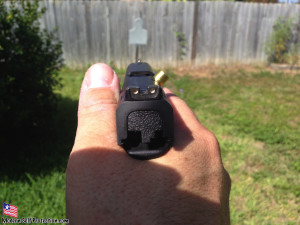
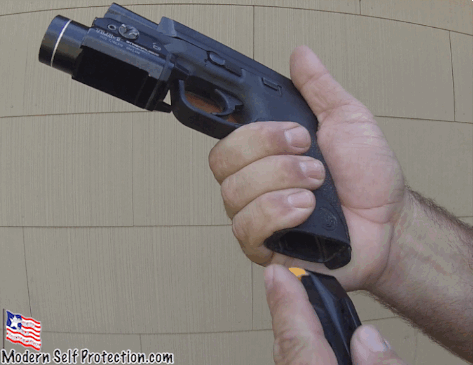
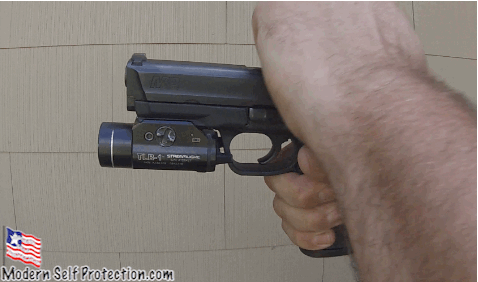
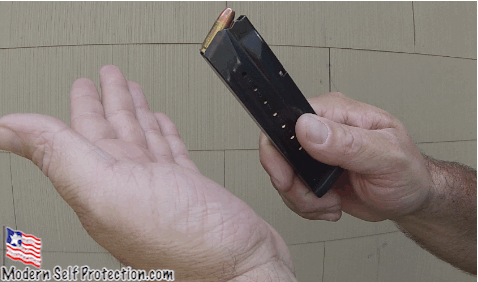

Wow, this article is full of opinions, little facts and much of the content is just plain wrong. Huh…